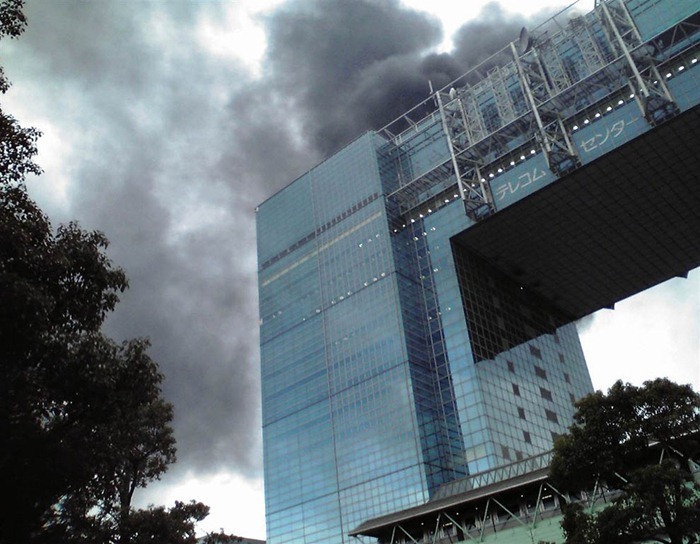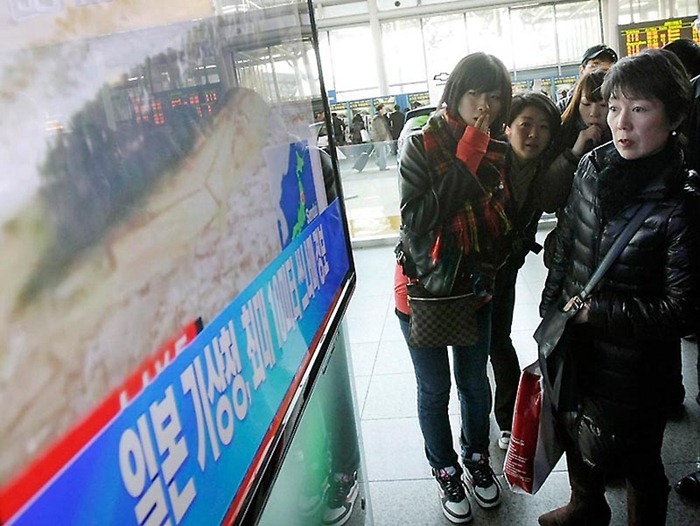A powerful earthquake measuring 8.9, with an offshore epicenter 373 km from Tokyo unleashed a wall of water 23-foot high that slammed against Japan's eastern coast today, killing at least 60 people as it swept away boats, cars and homes while widespread fires burned out of control. Tsunami warnings blanketed the entire Pacific, as far away as South America, Canada, Alaska and the entire U.S. West Coast. The earthquake was followed by more than 50 aftershocks for hours, many of them of more than magnitude 6.0. The death toll was likely to continue climbing given the scale of the disaster.

Large fishing boats and other sea vessels rode high waves into the cities, slamming against overpasses or scraping under them and snapping power lines along the way. Upturned and partially submerged vehicles were seen bobbing in the water. Ships anchored in ports crashed against each other.
The highways to the worst-hit coastal areas were severely damaged and communications, including telephone lines, were snapped. Train services in northeastern Japan and in Tokyo, which normally serve 10 million people a day, were also suspended, leaving untold numbers stranded in stations or roaming the streets. Tokyo's Narita airport was closed indefinitely.


An aerial shot shows vehicles ready for shipping piled like dominoes after a tsunami tidal wave hit Hitachinaka city in Ibaraki prefecture

People take shelter as a ceiling collapses in a bookstore during an earthquake in Sendai, northeastern Japan

The tsunami hits Kamaishi city port, Iwate Prefecture

Cars, lorries and debris swept inland by the tsunami at Kesennuma, Miyagi prefecture

Natural gas storage tanks burn at the Cosmo oil refinery, Ichihara, Chiba prefecture

Houses ablaze after being swept out to sea in Natori, Miyagi prefecture







Swirling waves on the coast at Oarai, Ibaraki prefecture




Burning building in Tokyo's Odaiba after the earthquake

Reporters of Associated Press hide under the table




Large fishing boats and other sea vessels rode high waves into the cities, slamming against overpasses or scraping under them and snapping power lines along the way. Upturned and partially submerged vehicles were seen bobbing in the water. Ships anchored in ports crashed against each other.
The highways to the worst-hit coastal areas were severely damaged and communications, including telephone lines, were snapped. Train services in northeastern Japan and in Tokyo, which normally serve 10 million people a day, were also suspended, leaving untold numbers stranded in stations or roaming the streets. Tokyo's Narita airport was closed indefinitely.


An aerial shot shows vehicles ready for shipping piled like dominoes after a tsunami tidal wave hit Hitachinaka city in Ibaraki prefecture

People take shelter as a ceiling collapses in a bookstore during an earthquake in Sendai, northeastern Japan

The tsunami hits Kamaishi city port, Iwate Prefecture

Cars, lorries and debris swept inland by the tsunami at Kesennuma, Miyagi prefecture

Natural gas storage tanks burn at the Cosmo oil refinery, Ichihara, Chiba prefecture

Houses ablaze after being swept out to sea in Natori, Miyagi prefecture







Swirling waves on the coast at Oarai, Ibaraki prefecture




Burning building in Tokyo's Odaiba after the earthquake

Reporters of Associated Press hide under the table






Tidak ada komentar:
Posting Komentar